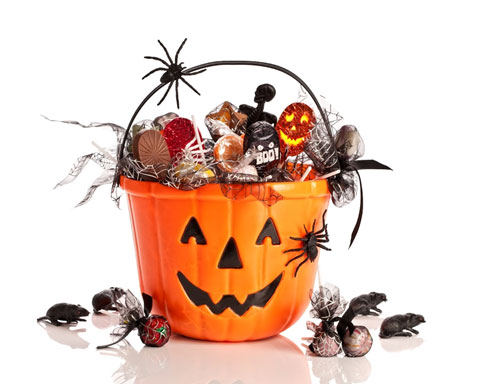 Children look forward to Halloween for many reasons. Along with dressing up in a costume, kids get to collect and eat lots of goodies, which usually consists of different kinds of candy. As a parent, you know all that candy isn't good for their teeth.
Children look forward to Halloween for many reasons. Along with dressing up in a costume, kids get to collect and eat lots of goodies, which usually consists of different kinds of candy. As a parent, you know all that candy isn't good for their teeth.
There is no need to have your child forgo Halloween altogether, however. Thankfully, there are some things you can do to help protect your child's teeth during this fun holiday. Here are four tips that can help parents protect their child's teeth from Halloween candy.
1. Understand that Some Candy Is Worse for Teeth than Others
The primary reason that Halloween candy is so bad for the teeth is that it contains sugar. You are probably aware that sugar causes cavities. Besides sugar, some candies are very acidic, which breaks down tooth enamel. When the enamel gets worn, down, the tooth is more susceptible to damage.
There are some types of candy that are worse for the teeth than others. When you know what candy is really bad for teeth, you can either not let your child eat that particular candy, or you can try to limit how much of that candy your child consumes.
Some of the worst types of candy for the teeth include:
- Sticky candies and dried fruits. These sweets stick to the teeth and increase the chances of cavities.
- Lollipops and hard candies. These types of candies take a long time to consume, and the longer they stay in the mouth, the more sugar sticks to the teeth.
- Sour candy. These candies include gummy worms, which contain high amounts of acid that increase the chances of tooth damage.
Candy that isn't as bad for the teeth includes dark chocolate, sugarless candy, and candy that dissolves easily.
2. Know When Your Child Should Eat Their Candy
You definitely should not let your child snack on their Halloween candy all throughout the day. Not only will eating candy whenever they want spoil their appetite but also it will increase the chances of cavities.
The best time for children to eat their candy is right after they eat a meal. As they eat their meal, it increases the production of saliva in their mouth. The increased amount of saliva helps get rid of sugar-containing food particles.
The kinds of foods your children eat with their meal can also help prevent cavities from forming. These foods include:
- Fruits and vegetables rich in fiber
- Cheese, milk, and other dairy products
- Poultry products, powdered cereals, and other foods that contain fluoride
You can also allow your child to eat a few pieces of candy right before they brush their teeth. When children brush their teeth after they eat candy, it provides the best way to immediately get rid of plaque and bacteria.
If you choose to do so, make a deal with your child. If they want to eat candy more often throughout the day, they need to brush their teeth every time afterward. If your kids can't brush their teeth after they eat their candy, you can offer them a piece of sugarless chewing gum, which increases saliva production and removes food particles.
3. Ask Your Child to Share or Donate Their Candy
If your child has way too much Halloween candy, encourage them to share it with others. Sharing their candy puts a limit on how much candy they consume, which will help protect their teeth. Along with sharing their candy, they can also donate it to a good cause.
For instance, some organizations that accept Halloween candy for soldiers include:
- Operation Gratitude
- Treats for Troops
- Operation Trick or Treating for the Troops
- Operation Shoebox
Other ways to donate Halloween candy include giving it to your local Ronald McDonald House, the homeless shelter, food pantry, or nursing home. When you encourage your child to share or donate their candy, not only will their teeth benefit, but also they will learn to think of others in the process.
4. Call the Dentist Right Away If a Cavity Is Suspected
If you suspect your child has a cavity from eating too many sugar-laden Halloween treats, their teeth should be examined as soon as possible. Some signs of a cavity include:
- Toothache or sensitivity to sweets
- Pain when drinking or eating something hot or cold
- Stains on the surface of the tooth
If your child has a cavity, the sooner a dentist examines their teeth the better. Left untreated, a small cavity can turn into a larger one or even a second cavity. An untreated cavity could also lead to pain, an abscessed or infected tooth, damage to the tooth, or problems chewing. Severe cases of untreated cavities could result in tooth loss.
No matter how much or how little Halloween candy your child consumes, if you are at all concerned about their teeth, contact Dentistry for Children & Adolescents. Along with filling cavities, our pediatric dental treatments include topical fluoride, dental sealants, root canal treatment, and bonding.
